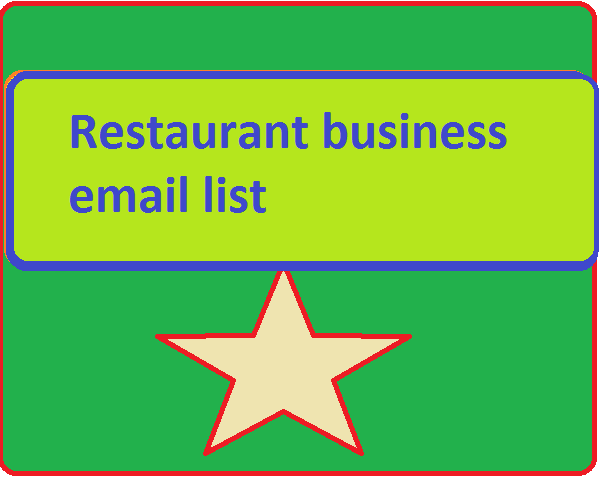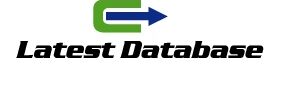Restaurant business email list with latest updated contact details from Marketing.
Latest Mailing Database provides you 95% double opt in verified mailing list from USA.See below details. Restaurant owners, while being aware of the financial management of their businesses, are more likely to be involved in troubleshooting the day to day issues that keep things running smoothly. Unfortunately, a financial accountant is a luxury that many small restaurant owners cannot afford. This article will address six main accounting problems that restaurant owners often encounter and how to either prevent them from occurring or how to solve the problems once they do occur. Being a small business owner is always a challenge and the restaurant business is complex financially. This article will concentrate on those issues that can be resolved with some good accounting skills and procedural methods. By teaching restaurant owners how to look for financial issues before they arise, an accountant, can help the owner correct or improve the financial techniques being utilized to manage profit and reduce any losses that are preventable. The six issues addressed here will focus on the: Problem One – Absence of an Accounting System Problem Two – When Major Operating Expenses are Higher than Total Sales Problem Three – Menu Offerings Problem Four – Food and Beverage Inventory Problem Five – Issues that Occur When Inventory is Higher than Sales Problem Six – Utilizing a Balance Sheet and Profit & Loss at Month End By investigating these issues, which are common problems for restaurant owners, managing these issues and troubleshooting them before the restaurant is out of control financially is feasible and can help an owner utilize accounting methods. Problem One – Absence of an Accounting System The first issues that a restaurant owner must deal with when trying to avoid accounting issues is to invest in a good piece of computer software that will help keep track of all transactions. Nessel, who is an owner and financial consultant to restaurant owners, recommends QuickBooks for keeping a General Ledger of all financial transactions that occur in the restaurant. All financial transactions must be recorded in the General Ledger in order for accurate records to be maintained. Without attending to this, the owner is not going to be able to run the restaurant without maintaining accountability in the ledger. Nessel further states that, “My experience is that how well the business is being proactively managed is directly correlated as to how well the owner is managing his “books”. Therefore, it is a primary concern for the owner to set up an accounting system in order to ensure the business runs smooth financially. Not having accounting and financial controls in place is the number one reason most businesses fail and if a restaurant is in trouble this is the first issue to address. The Restaurant Operators Complete Guide to QuickBooks, is recommended by many accountants as a guide to help setup a good accounting system. Problem Two – When Major Operating Expenses are Higher than Total Sales Statistics say that, “Restaurant food & beverage purchases plus labor expenses (wages plus employer paid taxes and benefits) account for 62 to 68 cents of every dollar in restaurant sales.” These are referred to in accounting terms as a restaurant’s “Prime Cost” and where most restaurants encounter their biggest problems. These costs are able to be controlled unlike utilities and other fixed costs. An owner can control product purchasing and handling as well as menu selection and pricing. Other controllable output costs for a restaurant include the hiring of staff and scheduling staff in an economically efficient way. “If a restaurant’s Prime Cost percentage exceeds 70%, a red flag is raised. Unless the restaurant can compensate for these higher costs by having, for example, a very favorable rent expense (e.g. less than 4% of sales) it is very difficult, and perhaps impossible, to be profitable.” Rental expenses for a restaurant (if one included taxes, insurance and other expenses that may fall into this category such as any association fees) are the highest expense a restaurant will incur after the “Prime Costs.” Rent averages around 6-7% of a restaurant’s sales. Since it is in the category of a fixed expense it can only become a reduced ratio through an increase in sales. If the cost exceeds 8% then it is useful to divide the occupancy cost by 7% to find out what level of sales will be required to keep rental expenses under control so they do not put the restaurant out of business Problem Three – Menu Offerings Most offerings on a menu are priced by the owner after visiting other local restaurant competitors, viewing their offerings and menus prices. However, menu pricing should never be done by simply looking at the menus of their competitors. Menu pricing must be done (and periodically redone as supplier costs fluctuate) and documented into the software books. Some math skills will be useful as a menu is converting product prices from purchases to recipe units. A restaurant owner needs to know the cost of making a recipe in order to know how to price it. This means knowing what the ingredients and the quantity of ingredient used costs per recipe. There is software available to help with this and Microsoft Excel can be used to customize menu costing while linking to inventory items that are available. Some of the things that an owner can do to help with accounting that are controllable through the menu would include: – Pricing the menu for minimum wage increases. – Using value-added meals to increase profits. – Re-introducing price increases while still keeping your customer base. A menu must be periodically updated as supplier costs change. This can be positive or negative according to the supplier. Either way, menu items can be adjusted according to the supplier costs with math and some help from inventory tracking software. Problem Four – Food and Beverage Inventory It is a common mistake for restaurant owners to review the Profit & Loss Statement and assume that what they have spent on food can be divided by sales in that period to find the cost of what was sold. This is an error. The inventory at the start and finish of the period must be known in order to calculate food costs in a precise manner. “For a restaurant with food sales of $50,000/month, an inventory difference of $1000 between the beginning and end of the month, can translate into a variance of 2%. This disparity represents half the total annual profit of a typical full service restaurant.” Simply put, one cannot manage food costs if they don’t keep records of what they are. Changes in inventory are essential to be aware of when calculating profit and loss. Microsoft Excel spreadsheets can be utilized to track inventory and document pricing and know all the totals of inventory when it comes to food and beverages. Tracking this through Excel will prevent mistakes. Problem Five – Issues that Occur When Inventory is Higher than Sales When food inventory is too high, the costs will be too high and waste is inevitable. Calculating inventory needs is absolutely a necessity to prevent food from going bad, being over portioned in recipes or even stolen. “A typical full service restaurant should have on average no more than 7 days of inventory.” There is an equation to use to find out how much inventory is needed for a restaurant to run properly. The equation is: Step 1) Multiply your average monthly food sales by your food cost %. Step 2) Divide that number (your average monthly food usage) by 30 (days/month) By using this formula and keeping records of all the beginning and ending inventory the problem of losing money due to wasted food costs is reduced or eliminated. Problem Six – Utilizing a Balance Sheet and Profit & Loss Statement For a restaurant to be successful it needs to be operated like a large business by the owner as much as possible. A weekly report at the very least is needed. The formatting of the report should be categorized. Inventory, suppliers, labor and sales should all have a start and end period. Fixed expenses such as rent and electric should be broken down to fit the report if it is weekly, or daily. It is not advisable to wait until the end of the month to calculate a report as changes occur swiftly in the restaurant business. It is a very important point that a start and end date should be included in the reporting and that even fixed expenses should be broken down so that a weekly net profit can be calculated. As previously mentioned, Microsoft Excel and other tracking software can be utilized for inventory and other costs, even scheduling which effects profit. Without keeping proper track of inventory, surplus, scheduling, menu pricing, portioning and all that has been covered in this study, can result in a restaurant going under. A restaurant owner simply needs to take the initiative to put some simple accounting strategies in place. It may seem as if a restaurant owner has to do it all; but, with some good software and a systematic method put in place keeping a restaurant on track financially will create financial rewards well worth the work.
Restaurant business email list
Amount of records: 5000
List include:
Business name
Address
City
State
Zip code
email address
Phone number
fax number
website address
Sic Code
Business category
File type: Excel, CSV
Updated: Recently Updated
Total Cost: $50
(One-time fee)
Delivery: instantly Download.

